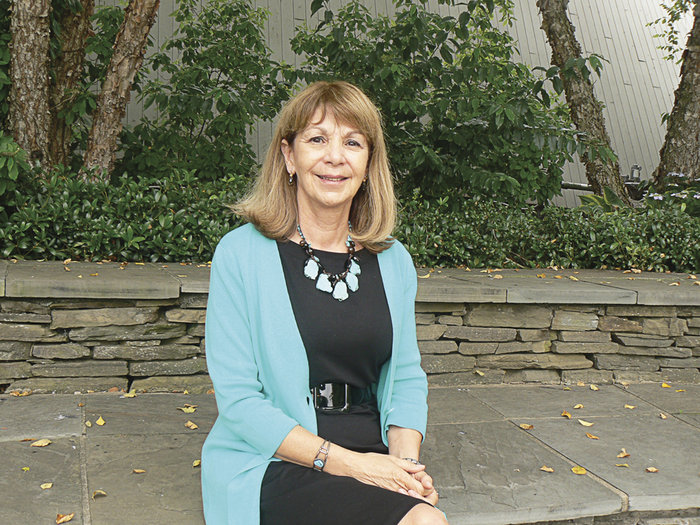More than 5,000 tons of trash were brought into the Meadowlands every day, six days a week, 300 days a year, from 118 New Jersey municipalities in the 1960s, Dr. Angela Cristini told seniors during a presentation at Meadowlands Environment Center in Lyndhurst on June 19. The lecture was called “Why are the ruins of NYC’s Penn Station in the NJ Meadowlands?” and covered everything from earthworm feces to pink granite columns.
“Regulation was at its infancy,” said Cristini on Tuesday. “It was basically a dump and push operation. Bulldozers would push and flatten out the heap…Waste was dumped into the water. There were no environmental controls.”
Before 1969 more than 5,000 tons were brought into the Meadowlands every day, six days a week, 300 days a year from 118 New Jersey municipalities.
____________
Pieces of the former Penn Station
Since the Meadowlands was a repository for all things trash, a number of curious items landed in the heap, including the ruins of the original Penn Station. According to Cristini, before an office tower and Madison Square Garden occupied the space, the original building had cathedral ceilings, skylights, and columns of pink granite.
“It was known as the Temple of Transportation,” said Cristini. She said it was finished in 1910 but then demolished in 1963 to make room for the entertainment and sports arena.
Cristini showed the audience pictures of the discarded pink granite columns, which she discovered in an intermodal trucking yard in Jersey City. She actually visited the yard and climbed behind rows of trailers before landing upon the treasure.
Swamp stigma
“The Meadowlands was viewed as a swamp,” said Cristini. “It was a wasteland.”
In the fifties, the marsh and tidal wetlands were surrounded by pig farms that dominated Secaucus, which developed a reputation for being the “hog capital of the east.”
Cristini shared a memory of driving through the area on the way to the Jersey Shore and rolling up the windows even in 95-degree summer heat.
“It really stank!” she said.
Many seniors in the audience acknowledged experiencing the stench.
Cristini said that there were over 5,000 pigs in the area, but reports indicate that at one point there were 250,000 pigs on 55 farms in the early 1950s.
The advent of industrial development along with a mosquito problem in the area compounded the swamp stigma. To address the mosquito problem, the New Jersey Mosquito commission, formed in the early 1900s, ditched, dyked and drained 17,000 acres of the area. They then covered the remaining areas of water with oil to prevent eggs from hatching.
The stench, oil, mosquitoes, and swamp-like atmosphere led to an unfavorable view of the Meadowlands at the time.
“What do you do in junky places?” said Cristini. “You fill them in.”
Earthworms as recyclers
Cristini described a number of advancements in modern day landfills. She said that today landfills have a bottom-liner, a drainage system to catch leachate (liquid formed from waste), a special cover, and layers of soil that eventually are capped and often designated as a parkland. The gas methane is collected from the landfills in the Meadowlands, for example, and used to generate electricity.
Near the end of her lecture she described composting, the process of organic material decay, and the role that earthworms play in being the “ultimate recycler.” She carried a large earthworm dummy that she referred to as Robin because earthworms are both male and female. They “are a true hermaphrodite,” noted Cristini.
She demonstrated how organic material moves through an earthworm through muscle action and showed the audience what earthworm feces looks like – your average garden soil.
“They take wonderful organic materials like old newspapers and they turn it into wonderful, organic rich soil,” she said.
She ended the presentation with a game of Marsh Jeopardy.
Cristini has a PhD. in Biology and has led programs at the Meadowlands Environment Center the past 10 years. She said the Tuesday presentation was part of ‘K through Gray’ programming to educate visitors about the Meadowlands past and present.
Adriana Rambay Fernández may be reached at afernandez@hudsonreporter.com.
